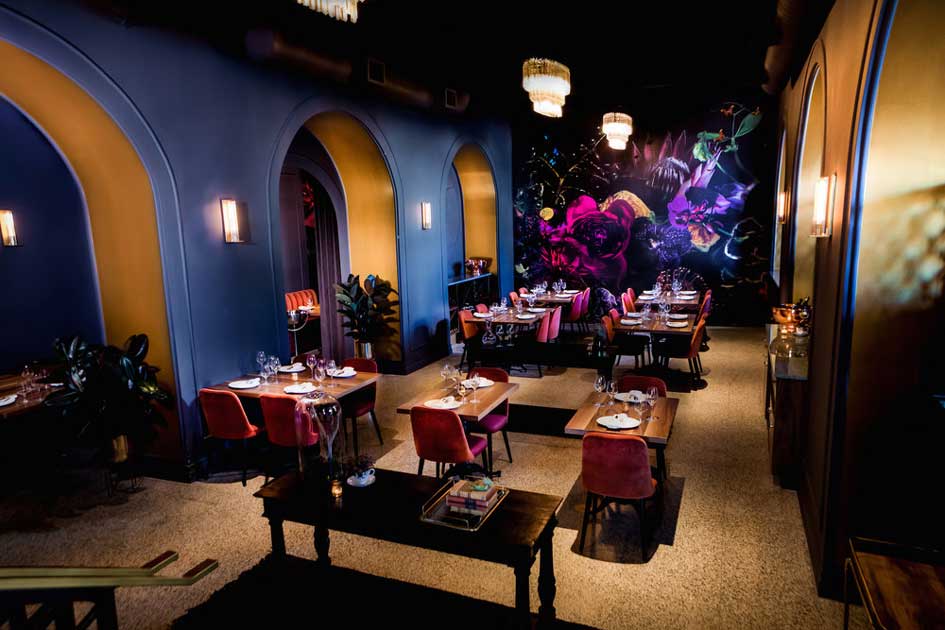Asian Restaurant ISB: A Must-Try Spot for Food Lovers in Islamabad
Asian Restaurant ISB: A Must-Try Spot for Food Lovers in Islamabad
Blog Article
Savor Authentic Asian Cuisine With a Pan-Asian Twist for a Culinary Adventure
Beginning on a culinary journey with authentic Asian cuisine, boosted with a Pan-Asian spin, supplies an unique opportunity to check out the rich tapestry of flavors that specify the area's varied culinary customs. This experience invites you to relish the elegant equilibrium of preferences-- sweet, salty, spicy, and sour-- integrated by aromatic herbs and spices. Visualize the cutting-edge combination of Thai curry and ramen or the unforeseen joy of sushi burritos. As you contemplate these attracting dishes, think about the social stories and historical impacts that shape them, each bite providing a tale waiting to be discovered.

Exploring Pan-Asian Flavors
In the world of international gastronomy, Pan-Asian cuisine sticks out for its remarkable diversity and the harmonious interaction of flavors from numerous Asian cultures. This culinary technique celebrates the rich customs and unique components discovered throughout the continent, developing a tapestry of preferences that is both interesting and gratifying. Key to Pan-Asian cuisine is its capability to balance different tastes-- pleasant, salted, spicy, and sour-- while highlighting the quality and quality of each component.
From the umami-rich soy sauce of Japan to the intense chili peppers of Thailand, Pan-Asian cuisine offers an extensive palette of flavors. These elements are usually combined in inventive methods, boosting recipes with layers of intricacy. As an example, the usage of great smelling natural herbs such as lemongrass and cilantro, usual in Vietnamese and Thai food, includes a refreshing brightness to dishes, while the incorporation of coconut milk delivers a creamy, rich appearance.
The focus on fresh produce and aromatic spices guarantees that each meal is not just a banquet for the taste however likewise for the senses. Pan-Asian cuisine invites diners to begin on a culinary journey, exploring the large and varied landscapes of Eastern gastronomy with every bite.
Blend Meals to Attempt
While Pan-Asian cuisine is commemorated for its conventional tastes, the contemporary cooking landscape is increasingly welcoming combination recipes that mix these traditional components with impacts from various other areas. This cutting-edge technique not only honors the abundant heritage of Asian cookeries however additionally presents novel taste experiences that appeal to modern tastes.
A prime example of such a combination recipe is the Korean-Mexican taco, where seasoned bulgogi beef is wrapped in a warm tortilla, topped with kimchi and a hot gochujang-infused salsa. This mix marries the bold, savory flavors of Korea with the dynamic, fresh aspects of Mexican food. In a similar way, sushi burritos have gotten appeal, amalgamating the delicate virtuosity of Japanese sushi with the hearty, hand-held comfort of a burrito, commonly featuring fusion components like tempura shrimp and avocado with a drizzle of wasabi mayo.
Another significant recipe is Thai curry ramen, which infuses the velvety, fragrant spices of Thai curry right into the comforting brew of traditional Japanese ramen, creating an unified blend that entices the detects. These combination recipes expand beyond simple uniqueness; they stand for a cooking discussion between societies, motivating exploration and advancement worldwide of Pan-Asian food.
Important Ingredients and Spices
To absolutely value Pan-Asian cuisine, one should understand the essential components and spices that develop its foundation. This varied cooking design draws from an abundant tapestry of Asian traditions, using an unified blend of appearances and flavors. Secret components consist of soy sauce, fish sauce, and oyster sauce, which give a savory umami depth vital to Oriental meals. Corresponding to these are rice vinegar and mirin, providing a delicate acidity and sweetness.
Fragrant components are crucial, with lemongrass, ginger, and garlic being ubiquitous throughout different Pan-Asian recipes. These ingredients give an aromatic base that enhances the complexity of flavors. Flavors such as celebrity anise, cardamom, and cinnamon present warmth and personality, resembling influences from areas like China and India.

Food Preparation Strategies and Tips
Mastering the art of Pan-Asian cuisine requires familiarity with its unique food preparation techniques, each adding to the vibrant tapestry of flavors this culinary tradition is commemorated for. Central to these approaches is the stir-fry, a fast food preparation strategy that preserves the dietary honesty and vibrant colors of active ingredients. Using a frying pan, the stir-fry approach enables even warmth circulation, essential for achieving the characteristic texture and flavor equilibrium of Pan-Asian dishes.
One more essential method is steaming, particularly common in Chinese cuisine. This mild approach maintains the natural tastes and nutrients of ingredients, making it suitable for seafood and veggies. Dumplings, a beloved staple, frequently take advantage of steaming, resulting in soft, succulent structures.
Grilling, additionally indispensable, presents great smoky depths to meals such as Korean bulgogi Chinese food Islamabad or Japanese yakitori (best asian restaurant Islamabad). This strategy usually includes marinading components, allowing tastes to penetrate deeply prior to food preparation over an open flame or warmer
Finally, understanding the art of stabilizing flavors-- wonderful, sour, salted, bitter, and umami-- is critical. Correctly layering these components can raise a recipe from regular to phenomenal, providing a facility and satisfying culinary experience that personifies the essence of Pan-Asian cuisine.
Eating Experiences Worldwide
Around the world, Pan-Asian food provides an unmatched eating experience, celebrated for its abundant tapestry of tastes and vibrant presentations. This culinary sensation has actually transcended cultural limits, recording the hearts and palates of food fanatics worldwide. In cosmopolitan cities fresh York, London, and Sydney, Pan-Asian dining establishments serve as fusions where cooking traditions from Thailand, Japan, China, and beyond merge, providing diners with a diverse mix of recipes that highlight the region's diversity.
The worldwide charm of Pan-Asian food exists in its capacity to provide both credibility and technology. Chefs skillfully wed traditional active ingredients such as lemongrass, soy sauce, and miso with contemporary methods, resulting in meals that are both refreshingly brand-new and acquainted. This fusion enables diners to begin on a cooking journey that appreciates heritage while welcoming modernity.
Moreover, dining experiences are boosted with attentively created atmospheres that show the principles of Pan-Asian looks. From minimalist Japanese-inspired interiors to vivid Thai-themed spaces, each restaurant uses an unique ambiance that matches the cooking offerings. Therefore, clients are not just taking in a dish but partaking in a social experience, making Pan-Asian eating a genuinely international phenomenon.
Verdict
The exploration of Pan-Asian cuisine uses an extensive understanding of the complex interaction of flavors and cooking practices throughout Asia. By accepting blend meals such as Thai curry ramen and sushi burritos, the cooking journey not only highlights the flexibility of typical ingredients however also showcases cutting-edge modern-day methods. This gastronomic adventure, enhanced by vital spices and cooking techniques, offers an unique possibility to appreciate the multiculturalism and cooking creativity that specify Pan-Asian cuisine on an international scale.
Getting started on a cooking trip with genuine Oriental cuisine, boosted with a Pan-Asian spin, offers a special chance to check out the rich tapestry of flavors that specify the region's diverse cooking traditions.In the realm of worldwide gastronomy, Pan-Asian cuisine stands out for its remarkable diversity and the unified interaction of flavors from numerous Eastern societies. Key to Pan-Asian cuisine is its capacity to balance different tastes-- pleasant, salted, spicy, and sour-- while highlighting the freshness and top quality of each component.

Report this page